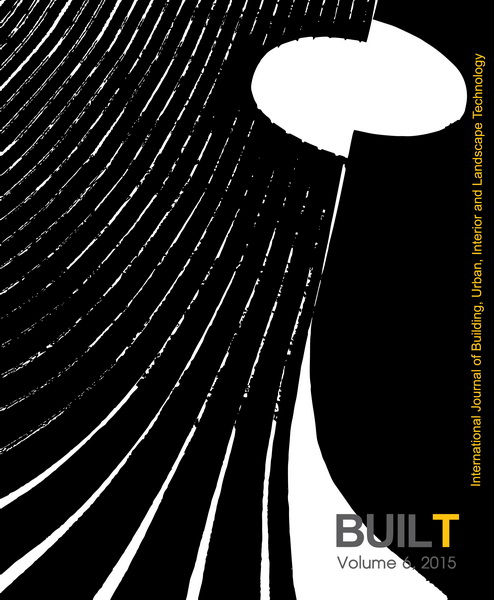Sustainable Campus Town Development in Suburban Area of Bangkok, Thailand
Keywords:
Campus town, Sustainable development, Suburban areaAbstract
The importance of university establishment is not aimed only increasing the educational level to young generation by providing specific knowledge, professional skills, or enhancing high-level of training facilities in order to raise skills of people for serving national job market, but also indirectly improving local economy and job opportunities for local people who are living nearby area of university. Therefore, it must be planned to meet the goal of urban development and sustaining the quality of life of the people, especially the suburban area of Bangkok, Thailand. Incorporating with the growth of mega city, the establishment of different university should not only consistent with regional planning and development in accordance to National Economic and Social Development Planning scheme, but should be complying with provincial and community development. However, university has been stimulating community development in all dimensions both positive and negative impacts. Urban problematics such as heavy traffic congestion, immigrations, safety and isolation between the “old-liver” and the “new-comer” had been induced in this area. Thus, campus master planning should be designed to create a node of urban intensification with pedestrian friendly environment which will not only encourage more compact development in the neighboring areas, but also provides health, environmental, and economic benefits.
Downloads
References
Bagnoli. D. C. (2012). Integration, revitalization and transportation: Smart growth opportunities for a small city campus: Benefits of a balanced town-gown relationship. Retrieved from http://www.oregon.gov/lcd/tgm/docs/bagnolippt102312.pdf
Beirão, G. & Cabral, J. S. (2007) Understanding attitudes towards public transport and private car: A qualitative study. Transport Policy, 14, 478-489.
Checkoway, B. (1997). Reinventing the research university for public service. Journal of Planning Literature, 11(3), 307–319.
Dielemanf, M., Dijst, M. & Burghouwt, G. (2002). Urban form and travel behaviour: micro-level household attributes and residential context. Urban Studies, 39(3), 507-527.
Engwicht, D. (1993). Reclaiming our cities and towns. In O. Ojeda & M. Yudell (Eds.). Campus and community. Philadelphia: New Society Publishers.
Ewing, R. (1997). Is Los Angeles-style sprawl desirable?. Journal of the American Planning Association, 63(1), 107-126.
Ewing, R. & Cervero, R. (2001). Travel and the built environment. Transportation Research Record, 1780, 87-114.
Gavazzi, S. M. & Fox, M. (2014). A tale of three cities: Piloting a measure of effort and comfort levels within Town-gown relationships. Innovative Higher Education, 40(3), 189-199.
Hillier, B. (1996). Space is the machine. Cambridge: Cambridge University Press.
Humphreys, J. M. (2009). The town-and-gown economy. Georgia Business and Economic Conditions. 69(1), 1-14.
Iamtrakul, P. & Hokao, K. (2011). Urbanization patterns in Asian mega city, Bangkok, Thailand and their impacts on road safety. Proceedings of the 9th Eastern Asia Society for Transportation Studies Conference. Jeju, Republic of Korea, 368.
Krizek, K. J. (2003). Residential relocation and changes in urban travel. Does Neighborhood-scale urban form matter?. Journal of the American Planning Association, 69(3), 265-281.
Litman, T. (2010). Land use impacts on transport: How land use factors affect travel behavior. Victoria Transport Policy Institute with Rowan steele. Retrieved from http://www.vtpi.org.
Martin, L. L., Smith, H. & Phillips, W. (2005). Bridging “town & gown” through innovative university-community partnerships. The Innovation Journal: The Public Sector Innovation Journal, 10(2), 1.
Meyer, M. D. & Miller, E. J. (2001). Urban transportation planning: a decision oriented approach. Boston: McGraw-Hill.
Newman, P. W. G. & Kenworthoy, J. R. (1989). Gasoline consumption and cities: a comparison of U.S. cities with a global survey. Journal of the American Planning Association, 55(1), 24-37.
Newman, P. W. G., Kenworthoy, J. R. & Vintila, P. (1995). Can we overcome automobile dependence?. Cities, 12(1), 53-65.Næss, (2006). Accessibility, activity participation and location of activities: Exploring the links between residential location and travel behavior. Urban Studies, 43(3), 627-652.
Office of the Registrar, Thammasat University. (2016). Student statistic yearn 2011 – 2015. Retrieved from http://web.reg.tu.ac.th/registrar/home.asp?pageid=5
O’Mara, M. P. (2012). Beyond town and gown: University economic engagement and the legacy of the urban crisis. The Journal of Technology Transfer, 37(2), 234- 250.
Thapa, R. B. & Murayama, Y. (2010). Drivers of urban growth in the Kathmandu valley, Nepal: Examining the efficacy of the analytic hierarchy process. Applied Geography, 30, 70-83.
White, S. W. (1991). Town and gown, analysis of relationships: Black Hills State University and Spearfish. South Dakota: Iowa State University.
Downloads
Published
How to Cite
Issue
Section
License

This work is licensed under a Creative Commons Attribution-NonCommercial-NoDerivatives 4.0 International License.












